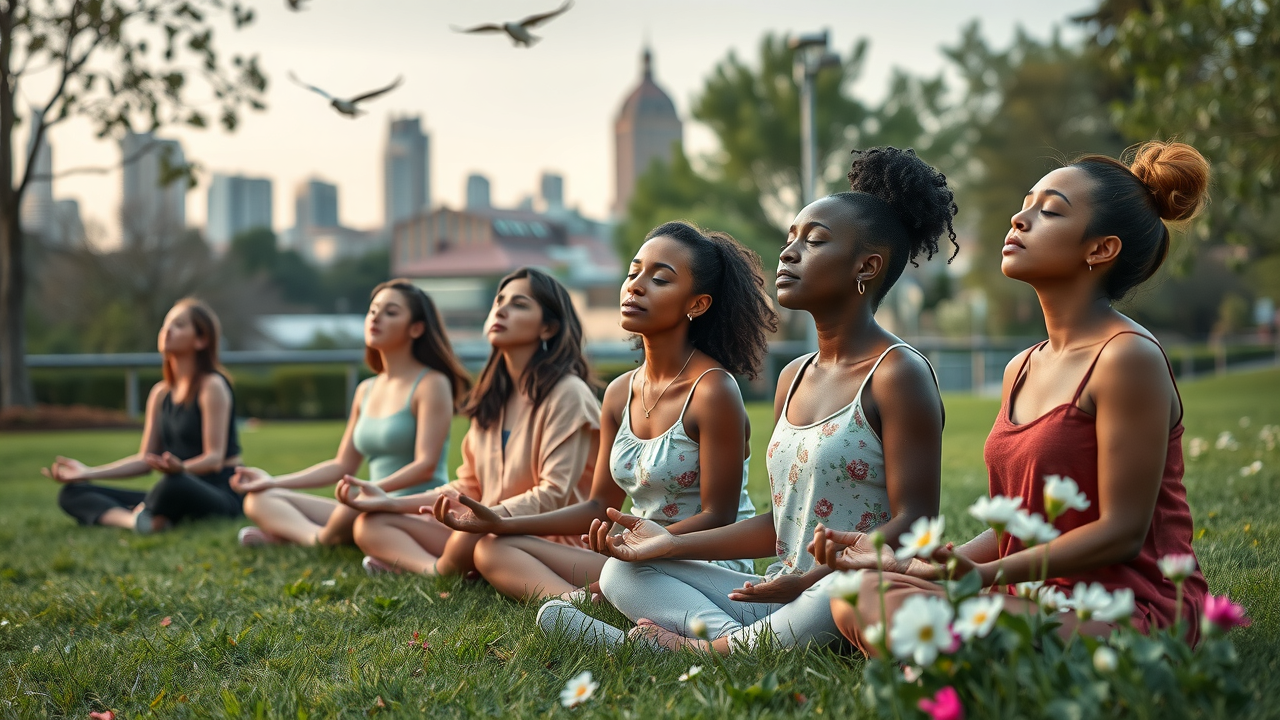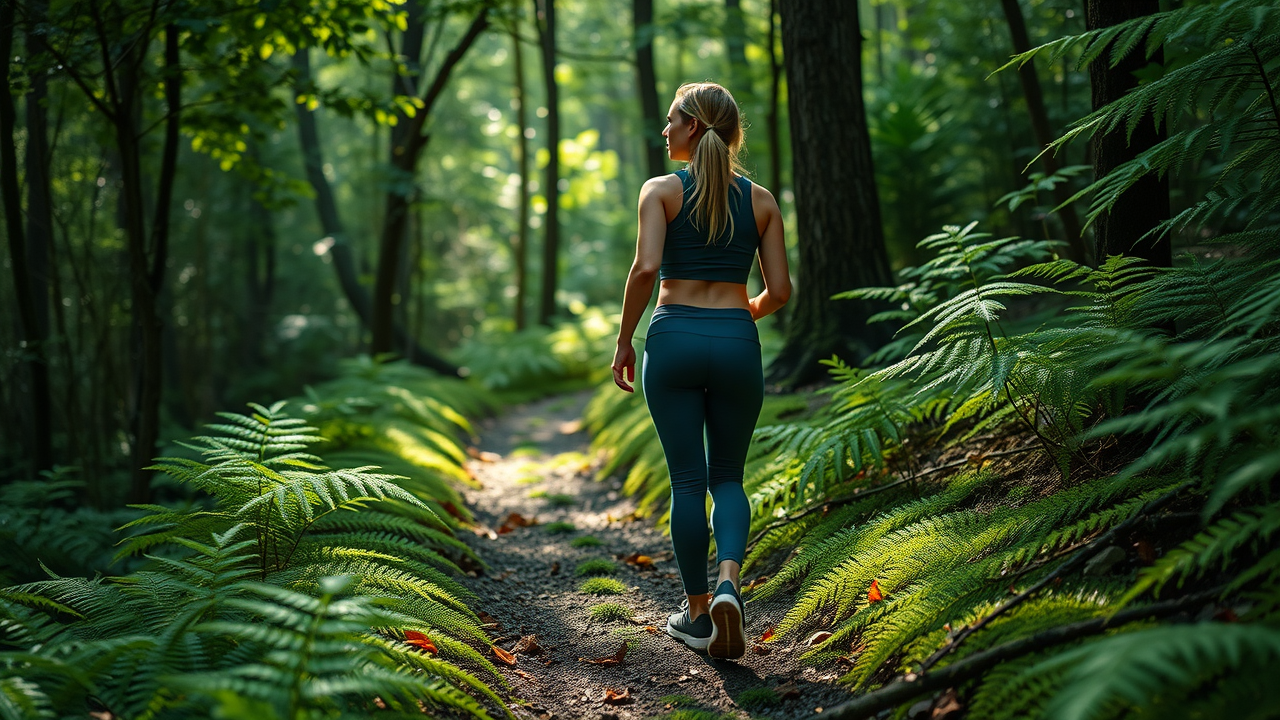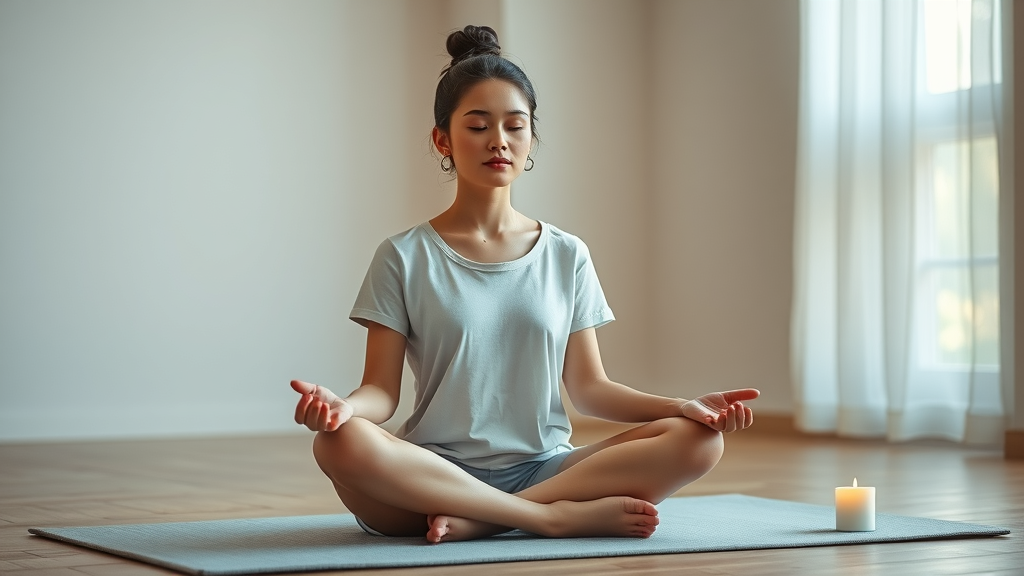Did you know that spending just 20 minutes in nature each day can significantly reduce stress and anxiety, improve mental health, and boost your overall well-being? Science has shown that nature and relaxation techniques are powerful allies in our pursuit of peace.
Unlocking Instant Peace: Why Nature and Relaxation Techniques Are Essential for Stress Relief

-
Discover how integrating nature and relaxation techniques into your daily routine can immediately reduce stress, improve mental health, and foster lasting tranquility.
-
Practical examples illustrate how anyone can get started—whether it’s mindful walking in a city park or practicing deep breathing exercises at your desk.
In a world where the pace of daily life feels relentless, the appeal of instant peace is stronger than ever. Nature and relaxation techniques offer a scientifically backed toolkit for not only reducing stress, but also restoring a deep, lasting sense of calm. Imagine pausing in the middle of a chaotic day, stepping outside into green space, and feeling your heart rate slow and your mind clear. Or perhaps you’re at your desk, and a few minutes of mindful breathing instantly help you refocus and recharge. These aren’t distant ideals—they’re accessible, real-life practices that anyone can fold into even the busiest daily routine.
By engaging with proven relaxation techniques —from deep breathing to mindful walking—and spending time in nature when possible, you activate your body’s natural relaxation response. Not only does this reduce stress levels, but studies also show improvements in mental health , focus, and emotional balance. This article will walk you through the science, practical strategies, and actionable methods to reclaim calm today—all designed for anyone ready to prioritize their health, peace, and happiness.
What You’ll Discover About Nature and Relaxation Techniques for Lasting Stress Relief
-
The physiological science behind stress, how nature directly counteracts anxiety, a breakdown of top relaxation techniques like deep breathing, progressive muscle relaxation, and mindfulness meditation, as well as actionable steps for instant peace.
Throughout these sections, you'll not only understand the connection between nature and relaxation techniques but also find step-by-step guidance and inspiration to build your own practice. Whether your goal is to relieve stress, improve mental health, or simply enjoy more peaceful moments in your day, the combinations of mindful outdoor experiences and effective breathing exercises open the door to sustainable, natural wellness.
Get ready to explore both the "why" and the "how" behind stress relief —and walk away with a toolkit you can start using immediately for a more balanced life.
Understanding the Connection Between Nature and Relaxation Techniques
The Science of Stress Relief: How Nature Impacts Mental Health

-
Explore how exposure to green spaces, forest bathing, and time in nature reduce stress, lower cortisol, and support mental health. Examine research linking time outside to improvements in overall well-being and decreased anxiety.
The natural world has a remarkable ability to ease our worries and help us manage stress. Modern research reveals that exposure to green space —from forest walks to time in your local park—lowers the production of cortisol, the body’s main stress hormone. This produces measurable improvements in mental health , from reduced anxiety to a brighter mood. Techniques such as forest bathing originated in Japan and are now supported by multiple studies highlighting how letting yourself be present in nature triggers a relaxation response, lowering blood pressure and heart rate after just a short walk outdoors.
Engaging with nature doesn’t have to mean escaping the city. Even spending time in a vibrant urban park, tending to potted plants, or gazing out a window at greenery can offer pronounced benefits. These experiences activate our body’s parasympathetic nervous system—the mechanism responsible for "rest and digest"—helping us recover from the mental fatigue and emotional strain common in daily life . Whether you seek tranquility during a lunch break or carve out a weekend for a hike, your relationship with nature can become one of your most powerful tools for stress relief and emotional balance.
The integration of relaxation techniques with exposure to the outdoors has been shown to go beyond short-term comfort. Studies demonstrate consistent spending time in nature fortifies resilience, making it easier to cope with daily challenges and even chronic stress and anxiety over time. As you move through your own wellness journey, remember that the most profound changes can come from simple, repeated moments in the natural world.
The Benefits of Spending Time in Nature for Stress and Anxiety
-
Practical insights on how time in nature and mindful outdoor experiences relieve stress, calm the mind, and help reset your nervous system.
Spending time in nature doesn’t just feel good—it works at a biological level to reduce stress and anxiety. When you immerse yourself in green environments, your brain’s "fight or flight" systems wind down, while calming neurotransmitters like serotonin increase. This is why even a short walk among trees, on the beach, or in a botanical garden leaves you with a noticeable sense of calm, making outdoor time a vital relaxation technique for people of all ages.
The restorative power of mindful walking , forest bathing, or even just sitting quietly on a park bench comes not only from movement, but from engaging all your senses. Notice the sound of birds, the scent of flowers, or the feeling of sunlight. These sensory cues help reset your nervous system and foster presence in the moment. Incorporating nature and relaxation techniques into your daily routine —even in short, regular bursts—has lasting effects on both mind and body.
For those managing chronic stress and anxiety , the outdoors offers a sanctuary. The rhythmic pattern of waves, the rustle of leaves, and the stability of ancient trees can provide much-needed grounding. Research consistently links regular **time in nature** to improved emotional wellbeing, resilience, and enhanced social connection. This makes nature a nonnegotiable foundation for anyone serious about long-term stress relief .
|
|
|
|
Comparison Table: Nature Activities vs. Indoor Relaxation Techniques and Their Impact on Stress Relief |
|
Activity |
Type |
How It Reduces Stress |
Best For |
|---|---|---|---|
|
Mindful Walking in Nature |
Outdoor |
Reduces anxiety, grounds attention in the present moment, engages all senses |
Anyone seeking immediate peace, even in a local park |
|
Forest Bathing (Shinrin-yoku) |
Outdoor |
Lowers cortisol, improves mood, boosts immune function |
Urban and rural residents, nature lovers |
|
Tai Chi Outside |
Outdoor/Indoor |
Combines gentle movement, deep breathing, and nature connection for holistic relief |
All ages, especially those needing gentle physical activity |
|
Progressive Muscle Relaxation |
Indoor |
Releases physical tension in muscle groups, calms the mind |
People with muscle tension or insomnia |
|
Deep Breathing |
Indoor/Outdoor |
Activates the body’s natural relaxation response, immediately lowers heart rate |
Anyone, anywhere—instantly accessible |
Top Nature and Relaxation Techniques for Reducing Stress and Anxiety
Deep Breathing and Breathing Exercises for Immediate Stress Relief

-
Step-by-step guides to deep breathing, focusing on your breath, and deep breathing exercises that you can use instantly for relaxation.
The foundation of most relaxation techniques is the simple act of a deep breath . Controlled, slow breathing sends powerful signals to your brain to relax—a fast and effective way to calm the mind and body. Try this: sit comfortably, place one hand on your stomach, and breathe in slowly through your nose for a count of four, feeling your belly rise. Hold for a moment, then exhale gently through your mouth for a count of six, noticing the tension leave your body. Repeat 5-10 times, focusing on your breath and the sensation of letting go.
Deep breathing exercises can be used anywhere, anytime—while walking in green space , sitting at your desk, or during a stressful commute. Not only do these exercises help manage stress, but they also improve mental clarity, sleep, and immune function by increasing oxygen flow and lowering stress hormones. With regular practice, deep breathing can transform how you feel in the present moment, making it one of the most accessible and universal relaxation techniques available.
For added benefit, combine deep breathing with visualization or guided imagery . Picture yourself in a favorite natural spot, hear the gentle flow of water or the rustle of leaves, and let each breath transport you there. This multi-sensory experience amplifies stress relief and deepens your sense of calm.
Progressive Muscle Relaxation and Muscle Relaxation Techniques
-
Instructions on progressive muscle relaxation and how muscle relaxation reduces both physical and mental tension.
Progressive muscle relaxation (PMR) is a classic relaxation technique that targets physical tension—a common byproduct of chronic stress and anxiety. To practice PMR, start by focusing on your feet. Tense each muscle group for 5-7 seconds (by scrunching your toes or flexing your calf muscles), then slowly release the tension, noticing the difference between tightness and relaxation. Move upward, engaging your legs, abdomen, hands, arms, shoulders, neck, and face, pausing after each group.
This intentional cycle helps retrain your body’s response to stress, bringing you back to the present moment and signaling safety and rest to your nervous system. Pairing PMR with other relaxation techniques —such as deep breathing or guided imagery —can enhance the overall reduction in physical and emotional stress levels. For those who battle muscle tension due to a fast-paced daily routine or demanding job, PMR is an essential tool for reclaiming comfort and wellbeing.
With regular practice, progressive muscle relaxation builds body awareness and can be adapted for quick use when you notice tension creeping in. Try it before bedtime, during a work break, or as a way to "reset" after a taxing day. It’s a practical, science-backed method for anyone seeking both physical and mental stress relief .
Mindfulness Meditation and Mindful Walking in Nature

-
Guidance on mindfulness meditation and mindful walking; learn to use every moment in nature as an opportunity for peace
Mindfulness meditation is the art of focusing your attention on the present moment without judgment—a core component of many effective relaxation techniques . To begin, find a comfortable seated position, close your eyes, and focus on your breath . Notice sensations in your body and let thoughts pass without attachment. Just five minutes a day can dramatically improve your sense of calm and clarity.
Take your meditation outdoors with mindful walking —a practice rooted in both Western psychology and Eastern tradition. Walk slowly through a green space or local park, tuning in to each footstep and the sensations around you: birdsong, the pattern of sunlight through branches, the feeling of air on your skin. If your mind wanders, gently return your attention to movement and breath.
Combining mindfulness meditation with spending time in nature harnesses the best of both worlds, with research demonstrating deep impact on stress, memory, and overall mental health . This simple, adaptable relaxation technique demands no special equipment—just a willingness to slow down, notice, and be present.
Forest Bathing (Shinrin-yoku): The Japanese Relaxation Technique for Instant Peace
-
Explore the benefits and simple methods of forest bathing—how immersing yourself in natural environments triggers deep relaxation and reduces stress hormones.
Forest bathing , or Shinrin-yoku , is an immersive Japanese practice that’s gaining global popularity for its profound stress relief effects. Unlike a brisk hike or typical exercise, forest bathing means wandering slowly through wooded environments, fully engaging your senses. Listen to birds or trickling streams, notice textures of bark and leaves, and breathe deeply.
Scientific studies show that people who adopt regular forest bathing experience a significant decline in cortisol levels and report enhanced wellbeing. The powerful combination of time in nature and mindful presence fosters a robust relaxation response , ideal for not only reducing daily stress, but also supporting long-term mental health .
You don’t need to live near remote woods to benefit. Seek out local nature reserves, botanical gardens, or tree-lined neighborhoods. Even short, intentional visits, repeated over time, can offer instant— and cumulative—peace. Forest bathing encourages us to slow down and remember our connection to the natural world, making it a cornerstone in any holistic approach to relaxation techniques .
Tai Chi: Movement for Calm and Mental Health
-
An introductory overview on tai chi in nature or at home—how this gentle mind-body practice supports stress relief and emotional balance.

Tai chi is a centuries-old Chinese movement practice designed to synchronize body and mind for profound stress relief . Composed of gentle, flowing motions and focused breathing, tai chi is accessible to all fitness levels and can be practiced in a green space, at home, or even in a sunny living room surrounded by plants.
Multiple studies support tai chi’s effectiveness in alleviating stress and anxiety , improving sleep, and enhancing overall mental health . Practicing outdoors maximizes the benefits by integrating the calming natural environment with slow, meditative movement. Even a daily 10-minute routine can create a perceptible shift in mood and physical relaxation.
If you’re new to tai chi , look for beginner-friendly videos or join community classes in parks or recreation centers. The emphasis on breath, balance, and gentle awareness makes it one of the best relaxation techniques for achieving harmony in both mind and body, particularly when integrated with spending time in nature.
Daily Routines to Reduce Stress: Integrating Nature and Relaxation Techniques
-
Practical daily schedules and micro-habits for spending time in nature, breathing, meditating, and using other relaxation techniques—even with a busy lifestyle.
Transforming the science of nature and relaxation techniques into sustainable routine requires small, realistic changes to your daily routine . Start with morning breathing exercises or a quick meditation by an open window. Use lunch breaks for mindful walking in a nearby park or stretch breaks with gentle tai chi movements. Bring natural elements indoors—such as leafy plants or a small fountain—to invite a sense of calm even on the busiest workdays.
Micro-habits such as pausing for three deep breaths before answering emails or visualizing a peaceful forest scene after stressful conversations can accumulate, driving lasting stress relief . Regular practice doesn’t mean more time, but more intention. Integrate relaxation into your commute, do progressive muscle relaxation before bed, and schedule weekend forest bathing trips, even if brief, to maintain resilience.
The best routines are personal—experiment and mix different relaxation techniques based on your needs and environment. By blending nature, mindful movement, and deep breathing into your daily life , you lay a solid foundation for balanced mental health and lasting peace.
Expert Tips: Combining Nature and Relaxation Techniques for Ultimate Stress Relief
-
Top expert-endorsed strategies for blending deep breathing, mindful walking, and outdoor time for holistic mental health, supported by quotes from wellness leaders.
"Nature is not a place to visit. It is home." – Gary Snyder
Leading wellness experts stress the synergy of combining outdoor time with established relaxation techniques for maximum stress relief . For instance, pairing deep breathing with mindful walking turns a simple stroll into a moving meditation, while practicing tai chi outside grounds each movement in the sights and sounds of the natural world .
Experts also advise on flexibility—make use of opportunities, big or small, to foster a sense of calm . This could mean keeping a list of local parks for spontaneous nature visits, or installing a bird feeder outside your office window for daily mental health micro-breaks. The key is consistency and genuine engagement with both body and environment.
As you build your toolkit, let expert-validated routines inspire you, but tailor your practice to your needs. No step is too small: even a few minutes of outdoor mindfulness or a deep breath under the sky can uplift your mood and transform your state of mind.
Nature and Relaxation Techniques for Chronic Stress and Anxiety
Long-term Benefits on Mental Health
-
Examine clinical studies and testimonials showing how consistent engagement with nature and proven relaxation techniques support resilience against chronic stress and anxiety.
While instant peace is deeply valuable, sustained use of nature and relaxation techniques amplifies their benefits, building lifelong resilience. Long-term studies show that people who regularly spend time in nature , practice mindfulness meditation , or engage in tai chi are less susceptible to chronic stress and anxiety and report higher satisfaction with life. Personal stories echo this research: daily walks in a local park or evening breathing rituals bring stability, hope, and transformation to those struggling with persistent stress.
As with all wellness journeys, the greatest changes are gradual—each mindful step in the natural world, each breath in the present moment, lays groundwork for improved mental health . The synergy between outdoor experience and gentle indoor routines provides multiple ways to cultivate peace, whatever life brings.
Find motivation in the growing community of individuals who have radically improved their wellbeing with steady, simple approaches. Over time, your regular practice will help you manage stress before it escalates, creating a life where peace is easier to access, even in challenging moments.
Overcoming Barriers to Spending Time in Nature
-
Solutions for urban dwellers, accessibility considerations, and ideas to bring the calming effects of nature and relaxation techniques indoors.
Not everyone has easy access to sprawling forests or wide-open natural spaces, but creative solutions make the power of nature and relaxation techniques available to all. Urban dwellers can seek out community gardens, rooftop terraces, and inner-city parks. Those with mobility challenges or limited time can nurture houseplants, listen to nature soundscapes, or use guided imagery to bring the outdoors inside.
Technology offers additional support, such as virtual forest walks, video meditation sessions, and apps designed to guide you through deep breathing or muscle relaxation routines. Don't underestimate the benefit of even modest exposure—simply sitting near an open window with fresh air, tending to an indoor fountain, or arranging images of the natural world around your home can produce a profound sense of calm .
The ultimate goal is accessibility and consistency: nature-inspired relaxation techniques can become part of any lifestyle, supporting mental health and stress resilience regardless of where you live.
How to Start Your Own Nature and Relaxation Techniques Practice: Step-by-Step
-
A practical checklist and action plan for beginners: get started today with easy, effective nature and relaxation techniques that fit your unique lifestyle.
Ready to begin your journey toward instant peace? Here’s a simple action plan to help you integrate nature and relaxation techniques into your daily routine :
-
Identify local green spaces : Find a park, garden, or even a tree-lined street near your home or workplace.
-
Block 10-20 minutes a day for outdoor time: Schedule mini-walks or nature breaks just as you would for any important meeting.
-
Practice deep breathing or progressive muscle relaxation outdoors or by an open window for improved effect.
-
Try a new technique each week : Experiment with mindful walking , forest bathing, or tai chi to find what resonates most.
-
Create reminders : Use phone alarms, sticky notes, or habit-tracking apps to reinforce your new practices.
-
Reflect and adjust : Journal your experiences and fine-tune your relaxation techniques as you learn what brings you the most calm.
These steps are easy to personalize—so whether you have an hour, or only a few minutes each day, you can create meaningful change. The key is to start small and be consistent.
People Also Ask About Nature and Relaxation Techniques
What are 5 relaxation techniques?
-
Deep breathing, progressive muscle relaxation, mindfulness meditation, tai chi, and forest bathing. Each one offers specific benefits for stress relief and can be combined for even greater impact.
What are some natural ways to relax?
-
Spending time in nature, breathing exercises, mindful walking, listening to natural sounds, and gentle movement such as yoga or tai chi are all effective natural ways to achieve instant calm.
How does nature help people relax?
-
Nature reduces psychological and physiological stress, lowers heart rate and cortisol levels, and supports emotional well-being through calming sounds, sights, and fresh air.
What things in nature are calming?
-
Flowing water, rustling leaves, birdsong, gentle sunlight, green plants, and quiet open spaces are repeatedly shown to be the most calming elements in nature.
Frequently Asked Questions About Nature and Relaxation Techniques
-
What is the quickest relaxation technique using nature? Mindfully stepping outside—regardless of location—and taking several deep breaths while noticing your surroundings can immediately produce a sense of calm.
-
Can I practice breathing exercises outdoors? Absolutely. In fact, being outside while performing breathing exercises amplifies relaxation and supports greater mental clarity.
-
How do I know which relaxation technique is best for me? Try a variety of approaches—deep breathing, muscle relaxation, meditation, or movement—and notice which practices best fit your lifestyle and offer the most meaningful stress relief.
Resource Roundup: Further Reading and Support on Nature and Relaxation Techniques
-
Books: "The Nature Fix" by Florence Williams, "Forest Bathing" by Dr. Qing Li
-
Podcasts: "Nature Therapy Practice," "The Calm Collective"
-
Apps: Calm, Headspace (mindfulness meditation in nature), Insight Timer
-
Scientific Studies: Look for research by the International Journal of Environmental Health Research on green space and stress relief
Share Your Journey: Become a Nature and Relaxation Techniques Guest Expert
-
Join our community of wellness enthusiasts. Share your success tips as a guest expert on my podcast and in my book. Go here to learn more: https://wealthywomaneveryday.com/spotlight
Take Action: Set aside 5 minutes today to try one of these nature and relaxation techniques—your peace starts now.
Integrating nature and relaxation techniques into your daily routine can significantly enhance your well-being. For instance, the article “How People Relax Around the World” explores various cultural practices, such as Japan’s forest bathing (shinrin-yoku), which involves immersing oneself in a forest environment to reduce stress and improve mood. ( time.com ) Additionally, “Forest Bathing’ Is Great for Your Health. Here’s How to Do It” provides insights into the benefits of this practice and offers guidance on how to engage in it effectively. ( time.com ) If you’re serious about reducing stress and reclaiming calm, these resources will offer valuable techniques and cultural perspectives to incorporate into your relaxation practices.
 Add Row
Add Row  Add
Add 




Write A Comment